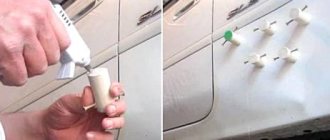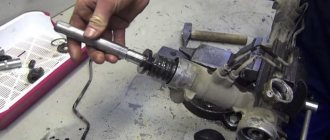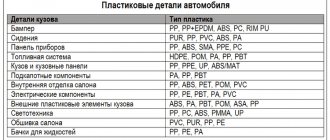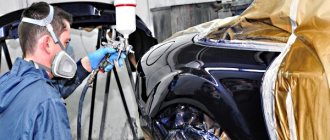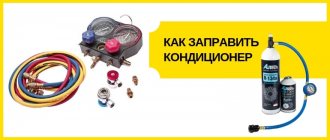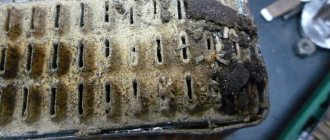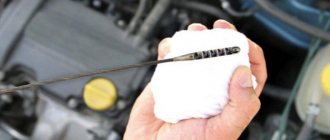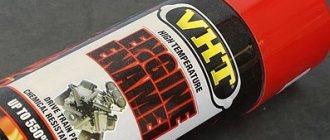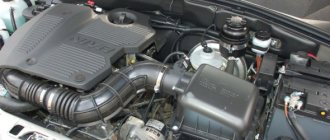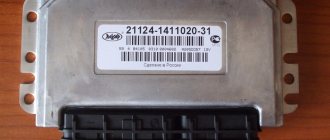The bumper suffers most often while the car is moving, since it is the first to be damaged when it hits an obstacle or an accident. That is why every car owner should know how to fix a dent on a bumper. Otherwise, he will have to completely change this expensive part, spending additional money and physical effort on it.
In addition, auto repair shops do not always undertake this work, since the design of modern bumpers is complex and, without experience working with products manufactured for cars of certain brands and models, it is very difficult to straighten a dent. That is why many car owners perform this procedure on their own, in their own garage, without involving professional auto repairmen.
Tools and materials
A dent in a plastic bumper can be easily repaired if you use the right quality tools. Moreover, when doing such work with your own hands, it is important that the product being repaired is carefully prepared in advance. As for the complexity of the tools needed to straighten a dent, in many cases you can use simple tools that do not require investing a lot of money.
To repair a plastic bumper, ridding it of dents, you must prepare the following materials and tools in advance:
- hairdryer When selecting it, it is imperative to pay attention to its power, which is why it makes sense to give preference to construction and other industrial devices that can heat up even thick-walled products well;
- boiling water. It is used for the same purposes as a hair dryer, and sometimes instead of it. Boiling water has a gentle effect on plastic products and that is why it is sometimes used to replace an industrial hair dryer. You can prepare it using an ordinary household electric kettle. You can bring it to the work site and prepare boiling water as needed;
- a screwdriver or other metal object with a blunt end;
- household or protective gloves. They are necessary to protect your hands from burns if they are accidentally exposed to hot air or boiling water;
- magnet for straightening metal parts or elements.
How to remove a dent on a car bumper yourself
Even in the event of minor contacts with obstacles or in an accident, it is the car’s bumper that takes the hit first. But its damage is unlikely to leave the vehicle owner indifferent. Therefore, if dents form, they must be removed.
Quite often, this can be done independently, without involving specialists from a car service center. Sometimes it’s easier and cheaper to fix a minor defect than to buy a new part and install it on the car. But to do this, you need to understand whether the element can be repaired and how to properly straighten a dent on the bumper.
If you decide to turn to the experts, be prepared for the fact that not everyone will undertake such work. It is not the most expensive, but it can be very complex due to the design features of bumpers on different brands and models of cars. Therefore, quite often car owners prefer to solve this problem with their own hands.
Set of materials and tools
Before straightening the bumper, it is recommended to assemble the necessary set of tools and materials. Without them, it is simply impossible to align the element. Since every car owner wants to achieve a high level of quality, it is impossible to do without preliminary preparation.
Dents can be repaired on plastic bumpers. They can be deformed in the required and controlled direction. And here it is not at all necessary to use expensive and complex equipment. A standard garage bumper straightening kit includes several of the most important components:
- Hair dryer. Only in the rarest cases, when the bumper is very thin, can you get by with a household hair dryer. But it is still recommended to find a construction model of sufficiently high power. This tool will be useful for heating, which will allow you to subsequently correct the broken geometry of the body element of your car. Powerful construction hair dryers can effectively heat even thick plastic, thereby giving the plastic product the required shape;
- Boiling water. Very hot water is used for the same purposes as the previously discussed construction hair dryer. In some cases, boiling water can replace power tools. Water with a temperature close to 100 degrees Celsius has a more gentle effect on plastic elements, and therefore it is often used as an alternative to a hair dryer. Boiling water should be prepared directly at the site of restoration work. It will be most convenient to use an electric kettle so that you don’t have to wait long for a new portion of boiling water;
- Screwdrivers. Take a set of screwdrivers of different sizes. You can replace them with other similar tools that have blunt ends. Here everything depends on the arsenal of tools you have;
- Gloves. Since the work will have to be done using boiling water and very hot air, which is created by a construction hair dryer, your hands must be protected. To do this, you can use construction or household gloves. The main thing is that they can prevent accidental burns;
- Magnet. Because a car bumper often includes metal components, a powerful magnet may be required to pull out the warped parts.
Preparing for repairs
A dent on a bumper can be deep or shallow, with or without damage to the paint layer. That is why, before starting to repair it, you must first inspect the damaged area and decide whether it is possible to carry out the repair in principle. If the bumper has cracks or other significant damage, repairing it is impractical and it would be better to buy a new product to replace the broken one. If the bumper looks slightly dented, it is quite possible to straighten it yourself.
Preparation stage
To get rid of a dent on a plastic bumper, it is first recommended to properly prepare. It is important to understand that the resulting dents can be shallow or deep. In one situation the paint layer is damaged, in another it is not. Therefore, before starting work, experienced specialists recommend carefully studying the future scope of work. It is not always the case that the situation allows for routine dent removal, as cracks, chips and other serious damage occur. Simple straightening will not have any effect. Restoration will require serious time and financial costs. In practice, it turns out that restoring such a body element will cost more than buying a new bumper. When there are minor dents on the bumper that do not result in cracks or chips, then feel free to proceed with straightening.
Dent removal algorithm
Repairing a dent on a plastic bumper is carried out in accordance with the following algorithm:
- the part is dismantled in order to have equal access to both its outer and inner surfaces;
- The dent area is thoroughly washed and dried, ensuring that its entire surface is dry and clean on both sides. Traces of rust, dirt, and fungus that could interfere with the normal course of the restoration process are strictly excluded;
- After preliminary preparation, it is necessary to level the bumper with a hairdryer, gradually warming it up. The entire repaired area must be uniformly heated to a temperature at which the plastic bumper softens, but there is no need to bring it to the melting point and you should press on it carefully during the work process. If this rule is not followed, the bumper will have to be repainted;
- Warming up the product with a hairdryer, or pouring hot water on it, we pull out the dent with gradual circular movements, pressing on it from the side. It would be great if this type of dent straightening is done using a blunt metal object.
- After warming up the bumper, you should wait a few minutes before straightening the dent, since under the influence of high temperatures, it can begin to straighten itself, returning to its previous state;
- after the part has taken on the old or received a new shape, and the dent has been eliminated, the bumper needs to be cooled at the site of damage using a wet rag, as well as a can of compressed air.
Remember that heated plastic is easily deformed, so you can only straighten it evenly on all sides.
Separately, it is worth noting that in the manuals devoted to the topic: how to remove a dent on a bumper, it is specifically stated that some types of plastics have “shape memory.” It lies in the fact that when repairs are carried out a relatively short time after the bumper has received damage, it can return to its previous shape somewhere in 10-15 minutes after the end of heating the product. If the bumper is cooled in time, it will be fixed in a new state and will never return to its previous state. As for putting it back in place, this can only be done when the damper has completely cooled down and is not afraid of serious mechanical impacts.
Types of damage to plastic bumpers
Scratches
Scratches are non-through damage to the bumper surface in the form of grooves. Bumper scratches are divided into two types:
- superficial scratches
- only the paintwork of the bumper up to the primer layer is damaged. - Deep scratches
- damage grooves have a significant depth, and not only the paint layer and primer layer are damaged, but also the plastic of the bumper itself.
Don't take too long to remove scratches on the bumper; over time, they can turn into cracks.
Scratches on the bumper can be removed by sanding with sandpaper or a sanding machine. The surface of the bumper is sanded until smooth, then the surface of the bumper is puttied, primed and painted.
Dents
Dents are deformations of the surface of a plastic bumper due to local stretching of the plastic. Dents are formed due to strong mechanical impact on the bumper. Dents are often accompanied by scratches and cracks.
To remove the dent, the deformed part of the bumper is heated using a hair dryer or a gas burner. When the deformed section of the bumper softens, the dent is straightened, returning the bumper to its correct shape.
Cracks
Cracks are called through damage to the bumper, having different lengths and shapes. Cracks are the most common type of bumper damage. Cracks that are not repaired in time increase in length over time due to vibration. There are different ways to repair bumper cracks: welding with a hot air gun, gluing with fiberglass and liquid polymer, soldering in a metal mesh or metal brackets with a soldering iron. The choice of repair method depends on the material from which the bumper is made and the size and appearance of the damage.
Chips
Chips are end-to-end damage to the bumper with separation of individual fragments from the bumper. Chips most often appear along the edges of the bumper after a car collides with obstacles. The methods for repairing bumper chips are similar to the methods for repairing cracks.
What to do with difficult dents
It is easy to straighten the bumper if it is plastic and does not have serious damage, but if it is metal, it will be more difficult to correct the situation. To do this, you need a magnet that is magnetized to the edge of the dent. After this, it is heated with boiling water, pouring it over the surface of the dent. Next, the magnet is pulled towards itself with force, gradually moving it towards the center of the dent. As a result, it should at some point straighten out, making a characteristic sound. The metal parts on the plastic bumper are aligned in the same way.
If deep dents appear on the plastic bumper, use the original method. To do this, take a powerful hair dryer and use it to heat the area around the damage. Next, the heated dent is cooled using a can of compressed air until frost appears on it. After the frost melts, the dent should disappear, since the plastic should “remember” the shape it previously had.
In the same case, when the dent is located next to a repaired chip or crack, you should not restore the bumper yourself. In this case, it makes sense to contact a specialized workshop that performs body work. Here you will have damage of any severity and complexity repaired, even if it is located in problem areas.
Bumper heating
- To straighten a dent, you need to properly remove all the stress created by the deformation. This can be done by heating the plastic and applying the right amount of force. When heating a dent, you also need to heat 10–15 cm around it. By doing this, you relieve the tension in the area around the dent created by the impact.
- For heating, you can use available means such as a hair dryer or boiling water. Other means that help to more evenly heat the entire deformation zone at the same time are exposure to an infrared lamp (drying), as well as dipping the damaged part into a bath of hot water. We will consider all these means below.
- Consider the thickness of the plastic before applying heat to the dent. On some modern cars, the plastic is very thin and can easily overheat.
- If the plastic is not hot enough, the deformation will not ease and, when straightened, will return. On the other hand, if you overheat the plastic, it will become much more difficult to repair. It will stretch unnecessarily when pressed. When plastic is overheated and on the verge of melting, strength and elasticity deteriorate as it cools. Therefore, it is important to heat the bumper to the correct temperature and not overdo it.
- There are cases when stronger heating of the plastic is necessary in certain places. For example, to remove folds formed during deformation.
- When using a hair dryer, you need to heat the bumper until the surface is hot when touched. The ideal temperature for heating the bumper is between 160–200 degrees. When heating the bumper, you need to hold the hair dryer nozzle close to the surface to control the heat, but no closer than 10 cm. Move the hair dryer evenly at a moderate speed to properly warm up the plastic. Excessive heat may cause the paint to bubble. At this temperature, the plastic can change shape with moderate force. Don't forget that you need to heat not only the dent, but also the area around it. When using a hair dryer, use its highest setting. A hair dryer is best used on medium settings. If the dent is large, then you can use two hair dryers. It is better to have a second person help.
When using hot water to straighten a dent, you need to boil a full kettle or pan of water. Hot water will make the plastic more flexible. Such heating will not last long, so you need to do everything very quickly. You need to get to the other side and press. We will look at dent correction in more detail below.
If a dent has formed on the ribs of the bumper, then after heating you need to press directly on the ribs.
- To straighten the dent, the bumper can be immersed in a bath of hot water (80–90 degrees Celsius) for several minutes. Part of the dent may return on its own, but the rest must be straightened by hand after removal from the bath. To remove any remaining deformation, you can apply local heat with a hairdryer set to the desired temperature.
- Infrared drying can be used to heat the damaged area. Drying can be considered a less accessible heating method, but effective. It is used in body repair and car painting. Drying softens a large area, and the dent becomes pliable and all stress is relieved. No matter how deep the dent is, it will heat up evenly and return easily without significant effort. In addition, if the plastic is well heated, there is less chance of small cracks appearing in the paint after straightening.
conclusions
The design of modern car bumpers and the technical properties of the materials used for their manufacture make it possible to carry out most repair work yourself. To do this, you need to be careful and careful not to use unnecessary physical force and damage the bumper. However, complex dents should be entrusted to the attention of professionals, since they may be located in inconvenient places, or their independent removal may lead to failure of this element of the car’s structure.
